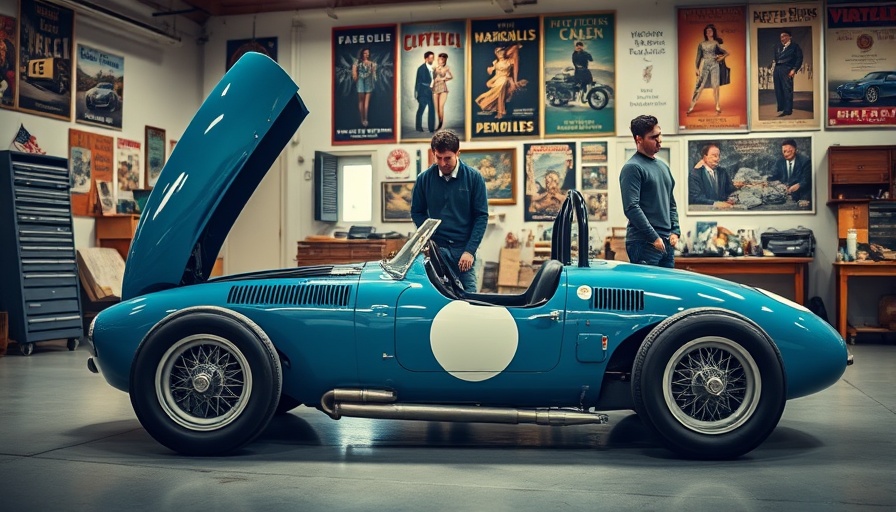
Unlocking Affordable Auto Repairs: Where to Find Salvage Car Parts
As many car owners know, the cost of maintaining and repairing vehicles can be quite daunting. For those looking to save money, sourcing replacement salvage car parts can be a prudent choice. Whether you have a vintage automobile that needs a tune-up or you’re simply replacing a damaged piece, finding affordable parts without sacrificing quality is essential. Let’s explore the best avenues to find these valuable components and some strategies to ensure satisfaction.
Exploring Salvage Yards for Bargain Deals
Salvage yards, known for housing vehicles that have been declared total losses by insurance companies, are treasure troves for car parts enthusiasts. When searching for replacement parts for antique cars or more common models, salvage yards typically offer a smorgasbord of components, ranging from body panels to brake pads. Not only do these yards provide used parts at competitive prices, but they often stock aftermarket parts that can be just as reliable.
When you arrive at a salvage yard, it’s helpful to have a list of what you need. Make inquiries to staff about availability and search carefully; you may find parts you hadn’t even considered replacing. Many salvage yards provide guarantees on their parts, giving you peace of mind that you are making a wise investment.
Tips for Exploring Junkyards
Like salvage yards, junkyards cater primarily to older or heavily damaged vehicles. For those embarking on a classic car restoration, junkyards can be the ultimate resource. The key is to arrive prepared. Bring tools to remove desired parts and be ready for potential negotiation on prices.
Keep in mind that some junkyards operate under a 'pick-and-pull' model, meaning you’ll need to extract the parts on your own. This DIY approach can often save you even more money, making it a fruitful option for budget-conscious car enthusiasts.
Leveraging Online Auto Parts Stores
The rise of online shopping has transformed how car owners source parts. Numerous websites cater specifically to those seeking salvage car parts for sale. Here, you can filter search results by make, model, and specific component, providing a tailored shopping experience. Online retailers often offer used parts at significantly lower prices than their brand-new counterparts. Some even provide additional information such as compatibility and warranty options, making it easier than ever to find what you need.
Buying a Salvage Car for Parts: A Strategic Move
Another excellent strategy is to consider purchasing a salvage car outright. This allows you to access all the parts in a single go, which can be advantageous if you foresee multiple replacements or repairs. Before buying, verify the vehicle's identification number (VIN) to ensure compatibility with your existing vehicle. This minimizes the risk of purchasing incompatible parts, which can be a costly mistake.
The Value of Aftermarket Parts
Aftermarket parts are another excellent alternative when sourcing replacement parts. These components are manufactured by third-party companies and usually come at a lower price point than original equipment manufacturer (OEM) parts. When utilized correctly, aftermarket parts can perform as well—if not better—than their OEM counterparts, particularly for older models where OEM options may be scarce. Always check for quality guarantees when purchasing aftermarket parts to ensure longevity and efficiency.
Essential Car Maintenance Tips for Success
In conjunction with sourcing the right parts, maintaining a regular car maintenance schedule plays a pivotal role in prolonging vehicle life. Establishing a routine car service checklist—like checking oil levels and battery health—can prevent further costs down the line. Regularly inspecting components like the brake system, transmission fluid, and air filters is immensely beneficial.
Seek the Right Help: When faced with complex repairs, consider consulting with an automotive specialist to ensure all processes are followed correctly. This not only guarantees better repairs but also enhances your DIY projects.
Finding Local Resources for Repairs
When it comes to sourcing salvage parts, don't forget to take advantage of local resources. Engaging with communities, online forums, and social media groups centered around car restoration can lead to finding hidden gems—whether fellow enthusiasts have spare parts or tips on nearby salvage yards. Building connections within these networks can be incredibly fruitful.
The Future of Auto Restoration: Trends and Predictions
As more car owners veer towards environmentally conscious choices, the demand for salvage and aftermarket parts is set to increase. This trend not only helps with sustainability but encourages individuals to restore older vehicles rather than buying new ones. This shift in consumer behavior points to a bright future for auto restoration, as more resources emerge to support this growing passion among enthusiasts.
In conclusion, sourcing replacement salvage car parts can dramatically cut costs while ensuring your vehicle's longevity. Whether your strategy involves visiting a salvage yard, utilizing online resources, or purchasing entire salvage vehicles for parts, the possibilities are varied and rewarding. Explore these options carefully, stay informed, and engage with fellow car enthusiasts to enhance your auto restoration journey.
 Add Row
Add Row  Add
Add 




Write A Comment